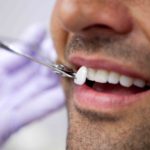As the COVID-19 pandemic continues, health surveillance and HSE (health, safety, and environment) management, has quickly proven to be one of the most important components when it comes to tracing the path of this coronavirus. COVID-19 affects the young and the old, and without proper active surveillance, it would be impossible to gather enough epidemiological data to accurately map the progression of the virus around the globe. However, while surveillance is incredibly important on a global scale, and then on a national one, it must also be performed within the workplace itself to keep workers safe. Every time a worker comes into the office, rides on public transportation, or spends time with their family and friends, they are at risk of both exposure to COVID-19, but if they are asymptomatic, then also spreading the virus itself. That is why health surveillance with an HSE focus should be incorporated into every pandemic plan.
Ongoing Pandemic Planning
Now that we are in our fifth month of the novel coronavirus COVID-19 pandemic, and have experienced a steep learning curve for how to prevent viral transmission, planning has begun to change. Many countries are now in Phase 2 or Phase 3 of their lockdowns, which means many businesses have begun to reopen. This means that the need for health surveillance and HSE management is more important than ever. Health, safety, and the environment are all linked together within the workplace, which means that they all must be monitored. When it comes to pandemic planning and surveillance, the first area that must be examined is health itself. No business wants a worker to come into work if they are exhibiting symptom of COVID-19. Thus, daily questionnaires and symptom checks must be administered at the beginning and the end of each shift. Should a worker report symptoms, contact tracing can quickly be performed to see who the worker came into contact with, and a 14-day self-quarantine instituted.
The second area that must be examined is safety. At this stage, wearing the proper personal protective equipment for a job is mandatory. Wearing a cloth mask can drastically reduce transmission of the virus, as well as donning a face shield. On top of this, wearing gloves or regularly sanitizing hands while at work can also stop the spread. Workers must be trained by their occupational health manager in proper PPE usage, and have regular checks performed to ensure that they are following safety regulations designed to keep them, customers, and their community’s safe.
A Safe Working Environment
The last area which requires health surveillance for HSE is the environment itself. Just because there is an added risk of COVID-19, does not mean that the risks pre-COVID have ceased to exist. Occupational health solutions must now include COVID-19 safety measures, while continuing with pre-existing ones depending on the work environment. If workers are in a factory setting, then they must maintain social distancing measures while using the equipment in a regulated manner. These are unprecedented times, but with the right technology and an effective health surveillance system that incorporates HSE into it, occupational health managers can do their part to curb the spread of COVID-19.
Related Posts












